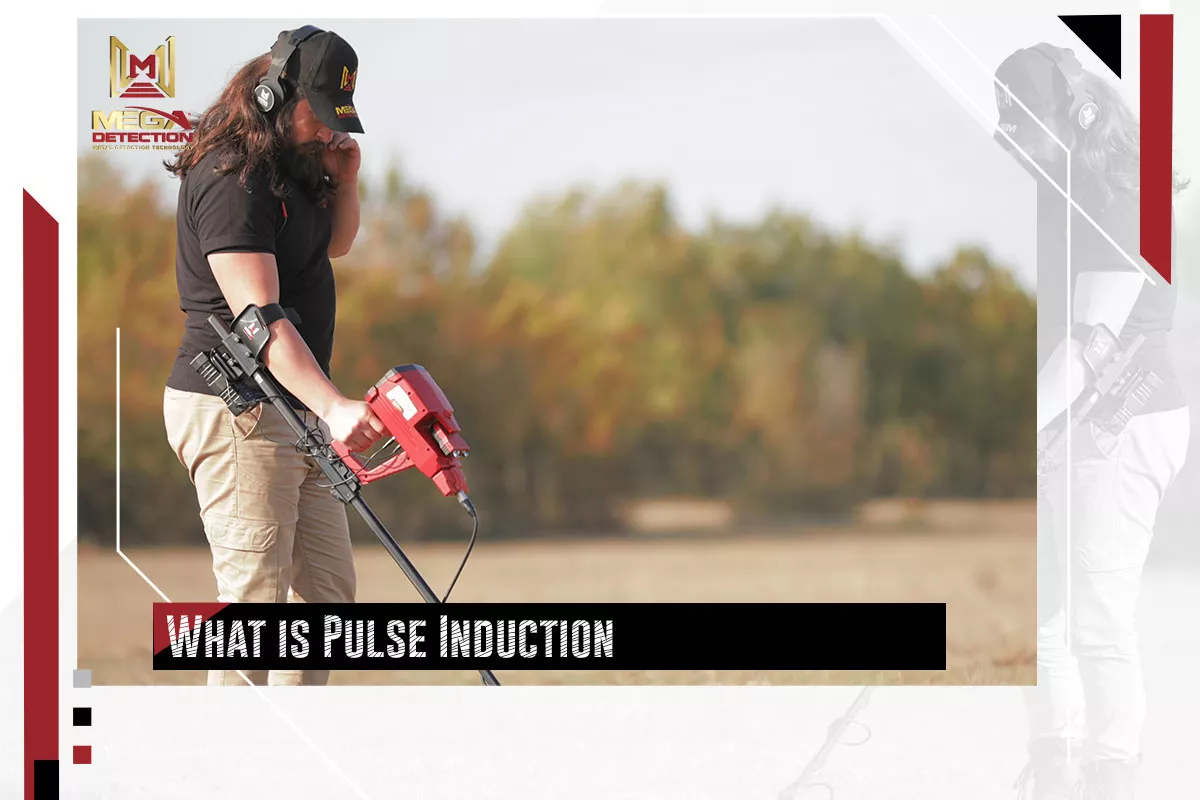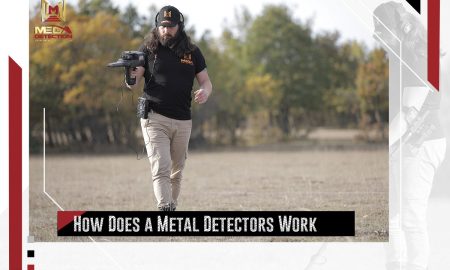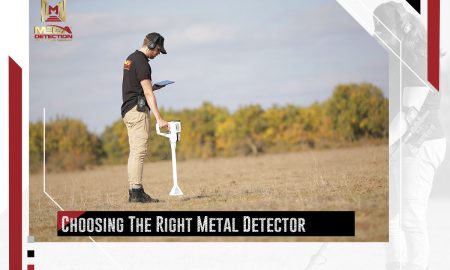What is Pulse Induction (PI) in Metal Detecting and When to Use PI Metal Detector
What is Pulse Induction (PI) in Metal Detecting and When to Use PI Metal Detector
What is Pulse Induction in Metal Detecting?
Pulse Induction (PI) a metal detector coil technology (the other is Very Low Frequency) which creates an electromagnetic field and then allows it to collapse (this is the pulse). Pulse Induction metal detectors offer no discrimination features, however are often used because they are not affected by mineralized ground.
How does a Pulse Induction Metal Detector Work?
Pulse Induction (PI) metal detectors work by sending a high amperage signal through a, usually, copper coil to create an electromagnetic field. This electromagnetic field is then allowed to collapse which in turn creates a voltage spike that is able to be detected by the receive coil.
If the electromagnetic field is in contact with a metallic object then the voltage spike is affected. This happens because the metallic object stores a small amount of the energy from the electromagnetic field within itself in the form of Eddy currents.
Eddy currents are formed by the natural response of a conductor to a varying magnetic field, this is the reason which Pulse Induction metal detectors create an electromagnetic field and allow it collapse. The collapse is opposite in direction and polarity to that of the initial pulse. This is also why Pulse Induction is named as such, because the Eddy currents are Induced by the metal detector rather than simply existing as a function of the metallic object.
Very Low Frequency (also known as an Induction Balance metal detector), in contrast to Pulse Induction, is a metal detector coil technology which works by allowing a constant alternating current to pass through a copper coil. With a Very Low Frequency metal detector the transmit coil and the receive coil must be separate due to the constant nature of the electromagnetic transmission. This is different from a Pulse Induction coil which can have the transmit and receive coil be the same coil which simply serves both functions.
The signal which is received by a Pulse Induction metal detector is sampled by a mini-processor and then averaged into another signal. This new signal is then converted to direct current and further processed by a beat frequency oscillator (only used in older detectors, otherwise this function is done by a mini-processor). A beat frequency oscillator is a device that was originally developed to make Morse code audible. In a metal detector it is used to make the signal of the receive coil audible to the user.
When to Use a Pulse Induction Metal Detector?
It may be confusing to know when you should switch from a Very Low Frequency metal detector to a Pulse Induction metal detector and vice versa. However, when you understand what things too look out for and what things you need to think about before you go out searching, it can be easy.
Firstly, if you know you will be searching in salt water or on salt water beaches, if possible use a Pulse Induction metal detector. The salt in the water, and the other minerals in the sand, will create signals that can confuse Very Low Frequency metal detectors and possibly cause you to miss hits or get hits that don’t exist. If you don’t have access to a Pulse Induction metal detector the discrimination feature on Very Low Frequency machines can be used to somewhat mitigate this problem. However, the best option in Pulse Induction.
Pros and Cons of a Pulse Induction (PI) Metal Detector?
Pros of PI Tech Metal Detectors:
Mineralization? No Problem
The main reason why Pulse Induction technology was invented was to solve a common problem that users were having which is that of the interference of highly mineralized ground on signal reliability. Pulse Induction metal detectors are not affected by mineralization due to the fact that these non-metallic ferrous minerals are often not very good conductors.
Generally, Greater Depth
In contrast to their Very Low Frequency counterparts, Pulse Induction metal detectors have the ability to detect metal at much greater depths. This is often a feature of the fact that Pulse Induction coils can be larger due to the initial signal having more power than a Very Low Frequency signal does.
Only Option for Salt Water
This advantage comes as a function of Pulse Inductions ability to ignore mineralization and Very Low Frequencies inability to do so. The salt, and other minerals, in salt water make it almost impossible to use almost any Very Low frequency metal detector on the beaches of the oceans or in the oceans themselves.
Although it is uncommon for most users to need this feature, if it is gold that you are trying to find then you may experience mixed results with a Very Low Frequency metal detector. However, due to the rejection of ground mineralization and powerful search depth and recognition of Pulse Induction even very small gold nuggets are detected.
Cons of Pulse Induction (PI) Metal Detectors:
Price
Like most newer technologies Pulse Induction is still generally more expensive than their Very Low Frequency counterparts. If this is not an issue then there may be some high-end Pulse Induction metal detectors which minimize the negatives, however if the high price is an issue then you might want to look for a Very Low Frequency metal detector instead.
Very Low Frequency metal detectors have been around longer and are more ubiquitous among manufacturers. There are some which have a higher price tag but many can be found for around a hundred dollars.
Discrimination
The one thing that everyone who has used a Pulse Induction metal detector knows is that it has no discrimination features. Due the way Pulse Induction detects metal it is unable to determine anything other than whether it is there or not.
This means that you need to be ready to be digging on every hit. If the area you are searching is riddled with pop-can tabs or nails, or any variety of junk, a Pulse Induction metal detector will not be able to help you filter these annoyances out.
Earth Field Effect Signal
Pulse Induction metal detectors are somewhat susceptible to the Earth’s magnetic field. The way this effect presents itself to most users is at the end of every swing it may sound like there is a hit but this is not true. It is easy to get accustom to but can still be annoying to deal with.
Pulse Induction (PI) vs Very Low Frequency Metal Detector: Which is Better?
There is no short answer to this question because, in my opinion, they serve completely different purposes. I mean they both detect metal, don’t get me wrong they both do that. What I mean is that they both have advantages and disadvantages to their respective coil technologies.
For Very Low Frequency metal detectors their advantages are more useful for the average user. If you are a beginner or simply someone who doesn’t use their metal detector in a variety of places than this is the one you will want to get. Discrimination features and the general proliferation of Very Low Frequency technology makes these metal detectors a great option.
However, if you are a looking for gold nuggets , or if you are looking on a salt-water beach, or if you have any of the specific needs that a Pulse Induction metal detector was built to serve, then a Pulse Induction detector is the best option. Another reason to get a Pulse Induction metal detector is if you are looking to search deeper in the ground as this is often where historical remnants can be discovered.
The decision of which coil technology to choose comes down to: price-range, geography of the area where you will be metal detecting, the type of target you are looking for, and your level of experience with metal detectors. Neither metal detector technology is better than the other one all of the time, or in all scenarios.
Similarly, if the soil in the area you are going to be searching is mineralized you may want to consider Pulse Induction. You can tell that soil is mineralized by crumpling it in your hand and seeing if the consistency is mostly small rock like particles, or sand like particles, instead of a fluffy biological waste product. Again, Very Low Frequency detectors can be used in this scenario but a Pulse Induction machine may be better.
Moreover, if you are a beginner, or someone who is just getting a feel of the hobby, just buy a Very Low Frequency metal detector. You will have a better experience, most of the time, due to the manufactures attempt to make a machine that works best in all scenarios. A Pulse Induction metal detector will often cost more and be geared to a specific use case that you might not fully understand how to utilize.












Leave a Reply